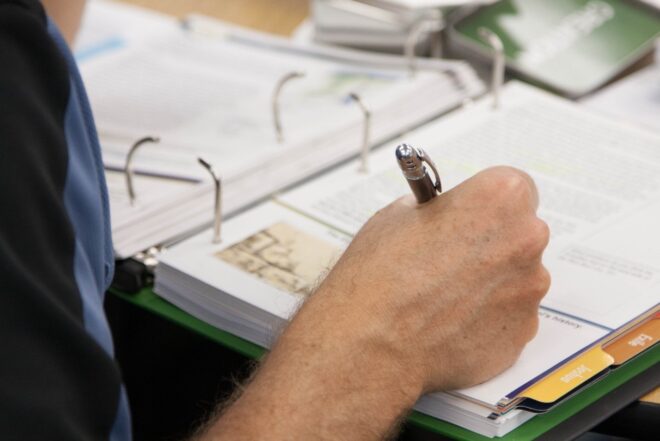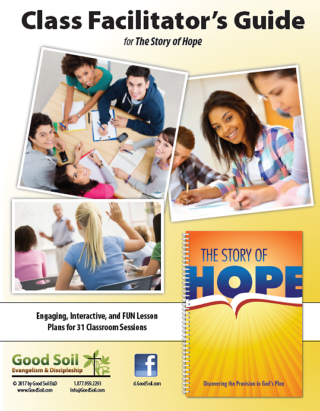How to Teach the Bible So Teens & Adults Understand It & Enjoy It

It probably does not surprise you that the rate of Biblical literacy is decreasing steadily in North America. But what may (or may not) surprise you is that Biblical ignorance among regular church attenders is following the same pattern.
Here’s a scary thought: What happens to evangelical Christianity in general, and our churches in particular, if Biblical literacy among Christians continues to decline—if we fail to stop the erosion of Biblical knowledge among our fellow believers and in our churches?
Obviously, the solution to this crisis of Biblical illiteracy in the church begins with a program for teaching children the Bible—the B-I-B-L-E, not just some moralisms and pious platitudes from a few cherry-picked Bible stories. We will get to that in a future article.
But, for now, let’s think about how to teach the Bible to TEENS and ADULTS so they will understand it, and even enjoy it.
Four Keys to Becoming a Better Bible Teacher with Teens & Adults
1. Introduce Teens and Adults to the BIG Story Bible Context
Let’s say you have heard about a very popular movie that has just been released on DVD or some online streaming service. It’s so good that lots of people are talking about it. You purchase the DVD or pay to see it online and set a time to watch it. Which would be more beneficial and enjoyable for you: (1) Begin the movie at the beginning and watch it all the way through, from the beginning to the end? Or, (2) Skip around and watch brief random segments?

There is a chronological unity to the Bible—a GRAND NARRATIVE that begins in Genesis 1 and continues through Revelation 22, with hundreds of smaller narratives (stories) that are all interwoven into the one BIG Story of the Bible. It’s the story of God’s plan of redemption for His creation, truly the “greatest story ever told” but a story seldom told from beginning to end. Unfortunately, our churches have generally chosen the “skip around” approach to teaching the Bible rather than tell and teach the whole story progressively from start to finish. Consequently, Christians by and large have never understood the BIG Story unity of the Bible. But we (at Good Soil Evangelism and Discipleship) have discovered that for many Christians this new-found chronological perspective of the Bible has re-ignited their interest in studying God’s Word.
2. Engage Teens and Adults in “Hands On” Bible Study
In short, change your “teaching” style. Move beyond lecture, and become a facilitator of Bible learning.

Make it your goal to equip adults and teens to study the Bible for themselves, rather than simply impart to them what you have learned. The place to achieve that is in your Sunday school classes, adult/teen Bible fellowships, or wherever you can engage adults or teens in Bible study.
How do you do that? The best way to facilitate Bible learning is to give students questions they can answer by studying the Biblical text. Then, lead them in group interaction regarding their findings and coach them to clarify and sharpen their understanding of the true Holy Spirit-intended meaning of the passage. By so doing, not only is you class studying the Bible—they are learning how to study the Bible. So, your class is more than a Bible class, it’s also a methods of Bible study class.
3. Engage Teens and Adults in Interactive Participation with Other Learners
Transition your class from being a “group of listeners” to a fellowship of learners.

I learned this important teaching procedure years ago as a youth pastor, teaching teens in Sunday school. And, later I discovered that it works as well or maybe even better in teaching adults. But my ability to stimulate learning-fellowship gradually developed as I gained more experience with it.
Phase 1 = Good. Like many other teachers, I started by presenting (“throwing out”) a Bible-related question to the entire class, seated in a traditional arrangement of chairs, and inviting class members to respond with an answer to me—the up-front guy (with spill-over to the class as a whole). Sometimes that would stimulate group discussion, but not always.
Phase 2 = Better. Then, to initiate some student-to-student interaction, I began to instruct class members to turn to a neighbor (student seated next to them) to discuss possible ways to answer the question before discussing it as an entire class. At this point, the seating arrangement in my class was still formal—people seated in rows and columns.
Phase 3 = Best. Then, I learned that table-seating (five or six people sitting around a table) enhances the interaction. So I transformed my classroom into a table-groups arrangement. Although traditional rectangular tables work much better than traditional rows and columns of chairs, round tables work best. Each table group becomes a learning fellowship as class members become increasingly comfortable with the process.
You can assign the same question for discussion to all of your table groups or assign a different question for each group. Give the groups time to study the Bible text and discuss how to answer the question within their groups, then call for them to share their responses with the entire class.
But sometimes, rather than table group interaction, I found that it was good to use “dyads” or “triads.” Dyad discussions are two people working together on a discussion assignment; triads involve three people. Or you can assign “standing dyads” or “standing triads”—asking students to get with another student or another two students and go to a place in the room where they can stand together to discuss a question together.
4. Make Learning FUN for Teens and Adults
“Students learn best when they are having fun.” That’s an axiom of learning that spans all generations of learners, not just kids. In fact, brain research informs us that “when the fun stops, learning also often stops.”

Too often teens and adults equate Bible classes with the words “boring” or “dull” or maybe even “painful.” But group Bible studies can and should be “fun.” The key to making Bible learning fun is not for you, the teacher/facilitator to try to be a comic or a clown. The key is all in how you teach.
You will find that the first step to making learning fun is the step that was just mentioned above—interactive participation among the people in the class. There are enough “fun people” in your class already to lighten and liven up you class for you if you just unleash them and let them talk.
But, beyond class interactivity, the key to making learning fun is in the learning activities you use in class. In a subsequent article, I’ll suggest some fun-enhancing tips and activities that you can use to raise the fun-level in your Bible classes.
Want to See All of the Above Tips in Action?
The Roots of Faith Video

Want a Curriculum Guide that Will Help You Get Started?

Learn more about The Story of Hope Class Facilitator’s Guide

Learn more about The Story of Hope Class Facilitator PowerPoint CD

Learn more about Adult Bible Classes




